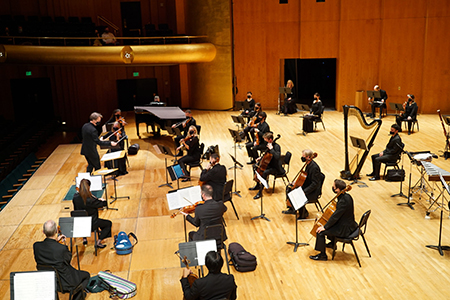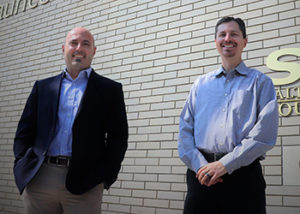
At its peak, the Covid-19 pandemic halted all outdoor events such as rock concerts and symphony performances. For classical musicians in particular, they feared contracting the virus not only from members of the audience but also from fellow players – particularly those with wind instruments.
Last year, University of Utah chemical engineering professor James Sutherland and assistant professor Tony Saad conducted a series of airflow studies inside Abravanel Hall and the Capitol Theatre in Salt Lake City – home of the Utah Symphony and Utah Opera – and discovered that steps can be taken to help mitigate the spread of a virus beyond just separating everyone via social distancing. Their results revealed these strategies can reduce aerosol concentrations in the breathing zone as well as the probability of infection by a factor of 100.
A paper detailing their studies, “Mitigation strategies for airborne disease transmission in orchestras using computational fluid dynamics,” was published June 23 in the newest issue of Science Advances. In addition to Saad and Sutherland, the paper was co-authored by chemical engineering graduate students Hayden A. Hedworth, Mokbel Karam, and Josh McConnell. You can read the paper here.
Sutherland and Saad and their team spent last year investigating the potential risk by first measuring the flow rates through the air vents of the buildings’ heating, ventilation and air conditioning (HVAC) systems. They also obtained the air flow measurements of various wind instruments, data that was already available through researchers at the University of Minnesota.

Using high-powered computers at the U’s Center for High Performance Computing (CHPC), the two professors developed simulations of how the air flows through, and ultimately, off the stages via the HVAC systems for each building. They also developed a computer model of how emissions from each of the wind instruments, such as the trumpets, flutes, oboes and clarinets, interacted with the air flow from the HVAC system.
The goal, Sutherland said, was to find the most effective way to get the emissions from the wind instruments to flow into the current of the air conditioning system, off the stage and ultimately out of the building.
“We would look at the results of the simulation and learn this particular instrument was problematic. Then we would ask where we can move it to mitigate the risk,” Sutherland said. “We would move the musician around, and we would perform a new simulation.”
Their final recommendations for the orchestra involve moving just about every musician to a different spot on the stage to maximize the flow of their emissions out of the auditorium. They also had suggestions for the HVAC system itself to improve the flow dynamics above the stage. For the most recent season of the Utah Symphony, administrators instituted some of the measures Saad and Sutherland made in their report in addition to spacing out members of the audience.
While the threat of the pandemic has been steadily decreasing since the introduction of vaccines for Covid-19, the study still has provided important lessons, Saad said.
“It has brought to light the importance of fluid dynamics when looking at airborne disease transmission – going beyond the six-foot social distancing rule,” he said. “And it demonstrates the need for computational fluid dynamics and high-performance computing to address problems realistically.”
Click below to see a video that explains their study in more detail.